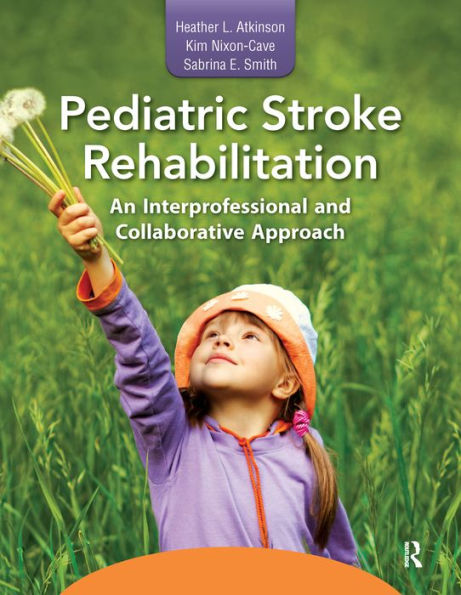Pediatric Stroke Rehabilitation: An Interprofessional and Collaborative Approach is a groundbreaking text designed to enhance the practice of all health care providers, enrich discussion, and emphasize the interdisciplinary nature of managing best outcomes for a child who has had a stroke. Evidence-based practice is threaded throughout the text with an emphasis on recovery vs. compensation, goal achievement, and outcome measurement.
In conjunction with the interdisciplinary contributions from a wide variety of health care professionals, Drs. Heather Atkinson, Kim Nixon-Cave, and Sabrina E. Smith aim to provide the necessary tools to effectively treat children with stroke.
The first section reviews the medical fundamentals, covering all major types of strokes. The second section of Pediatric Stroke Rehabilitation focuses on the core of the matter, rehabilitation. The final section expands the understanding of the child’s recovery to the family, community, and school environment.
Select chapters include:
- Personal vignettes written by family members of children who have had a stroke that provides insight into the impact a stroke can have on the child and family
- A family focus box to summarize the main points of the chapter to provide the best tools for caregivers to advocate for their child
- A case study related to the content and family perspective
Pediatric Stroke Rehabilitation also utilizes the World Health Organization’s International Classification of Functioning, Disability, and Health (ICF) framework throughout.
Included with the text are online supplemental materials for faculty use in the classroom.
Pediatric Stroke Rehabilitation: An Interprofessional and Collaborative Approach is an interdisciplinary and invaluable resource for students and clinicians to understand and apply effective evidence-based practice and treatment approaches for childhood stroke. The text will also be of interest to healthcare professionals, specifically physical therapists, occupational therapists, speech-language pathologists, physicians, neuropsychologists, nurses, and educators, who work with children who have experienced a stroke.
Pediatric Stroke Rehabilitation: An Interprofessional and Collaborative Approach is a groundbreaking text designed to enhance the practice of all health care providers, enrich discussion, and emphasize the interdisciplinary nature of managing best outcomes for a child who has had a stroke. Evidence-based practice is threaded throughout the text with an emphasis on recovery vs. compensation, goal achievement, and outcome measurement.
In conjunction with the interdisciplinary contributions from a wide variety of health care professionals, Drs. Heather Atkinson, Kim Nixon-Cave, and Sabrina E. Smith aim to provide the necessary tools to effectively treat children with stroke.
The first section reviews the medical fundamentals, covering all major types of strokes. The second section of Pediatric Stroke Rehabilitation focuses on the core of the matter, rehabilitation. The final section expands the understanding of the child’s recovery to the family, community, and school environment.
Select chapters include:
- Personal vignettes written by family members of children who have had a stroke that provides insight into the impact a stroke can have on the child and family
- A family focus box to summarize the main points of the chapter to provide the best tools for caregivers to advocate for their child
- A case study related to the content and family perspective
Pediatric Stroke Rehabilitation also utilizes the World Health Organization’s International Classification of Functioning, Disability, and Health (ICF) framework throughout.
Included with the text are online supplemental materials for faculty use in the classroom.
Pediatric Stroke Rehabilitation: An Interprofessional and Collaborative Approach is an interdisciplinary and invaluable resource for students and clinicians to understand and apply effective evidence-based practice and treatment approaches for childhood stroke. The text will also be of interest to healthcare professionals, specifically physical therapists, occupational therapists, speech-language pathologists, physicians, neuropsychologists, nurses, and educators, who work with children who have experienced a stroke.

Pediatric Stroke Rehabilitation: An Interprofessional and Collaborative Approach
284
Pediatric Stroke Rehabilitation: An Interprofessional and Collaborative Approach
284eBook
Related collections and offers

Product Details
| ISBN-13: | 9781040135778 |
|---|---|
| Publisher: | Taylor & Francis |
| Publication date: | 06/01/2024 |
| Sold by: | Barnes & Noble |
| Format: | eBook |
| Pages: | 284 |
| File size: | 20 MB |
| Note: | This product may take a few minutes to download. |
